| | 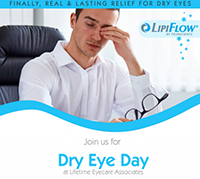 |
| | Lifetime Eyecare Associates created an event about dry eye. |
| | |
| | 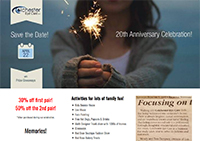 |
| | 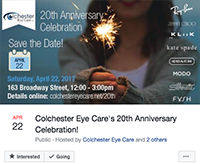 |
| | EyeCarePro helped build a webpage and Facebook presence for the 20th anniversary of Colchester Eyecare. |
| | |
| | 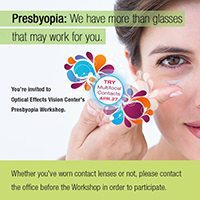 |
| | Optical Effects Center helped patients understand vision issues via Presbyopia Workshops. |
| | |
| | 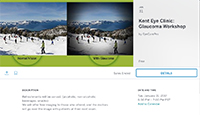 |
| | Kent Eye Clinic offered a glaucoma workshop. |
| | |